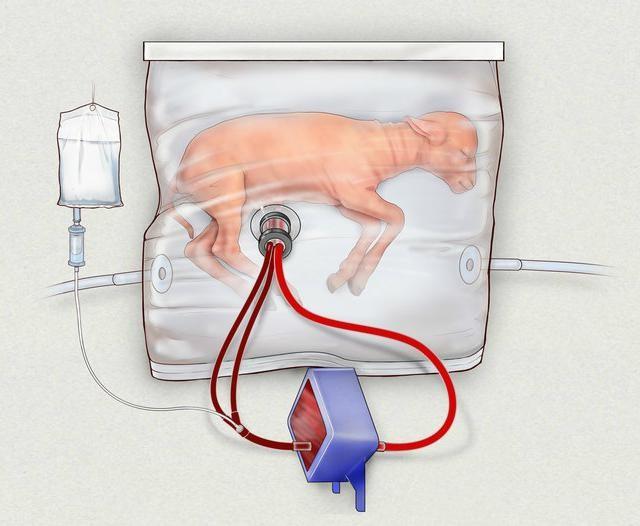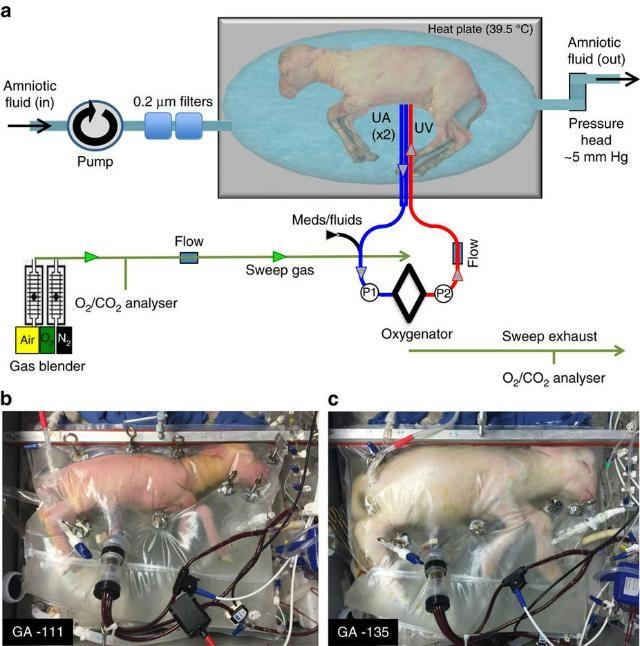Scientists develop artificial wombs to help save lives
Scientists have successfully grown premature lambs in artificial wombs – a technological achievement that in three years could lead to the saving of premature human babies’ lives.
At a glance, the technology looks like something out of a science fiction movie. The lamb is sealed in a sterile, clear plastic bag, to which is attached a number of tubes. The setup is, in fact, an artificial womb – one that protects and nurtures lambs in the late gestation period.

“What we tried to do is develop a system that mimics the environment of the womb as closely as possible,” explained study senior researcher and CHOP fetal surgeon Alan Flake. “It’s basically an artificial womb.”
He added: “The whole idea is to support normal development; to re-create everything that the mother does in every way that we can to support normal fetal development and maturation.”
The research team gathered eight lambs between 105 and 120 days in the gestation stage (which in humans is equivalent to between 23 and 24 weeks in the womb), then enclosed each within an artificial womb.
Each womb contains an electrolyte solution that mimics the amniotic fluid-filled environment of the uterus.
Pumped by its own heart, the lamb’s blood is conveyed through its umbilical cord and into oxygenator devices situated outside the bag. Activated by this blood-pumping, the oxygenators then act like a placenta by providing the lamb with oxygen and an assortment of substances vital to survival.

Long story short, the artificial wombs did their job. Four weeks after the lambs had been placed within them, their lungs and brains had already matured, and were even free of abnormalities. They could swallow, blink their eyes open and close, wiggle, and had even grown wool.
“We’ve been extremely successful in replacing the conditions in the womb in our lamb model,” said Flake.
“They’ve had normal growth. They’ve had normal lung maturation. They’ve had normal brain maturation. They’ve had normal development in every way that we can measure it.”
Saving human lives
Only around half of babies born at 25 weeks or less survive, and even when they do, most develop major complications such as mental retardation, cerebral palsy, paralysis, seizures, deafness and blindness.
“Just looking at them it’s immediately clear that they shouldn’t be here yet, they’re not ready,” said researcher Emily Partridge, a Children’s Hospital of Philadelphia (CHOP) doctor for infants born critically premature.
“They have very immature organs,” agreed Flake. “They’re simply not ready to be born yet.”
An artificial womb, however, can help these babies not only survive, but also prevent extreme health problems usually associated with premature birth.
“These infants have an urgent need for a bridge between the mother’s womb and the outside world,” said Flake. “If we can develop an extra-uterine system to support growth and organ maturation for only a few weeks, we can dramatically improve outcomes for extremely premature babies.”
The scientists hope that in three years’ time, they could develop the technology to nurture premature human babies. This experiment with the lambs is already proving an integral stepping stone. For instance, the oxygenating devices connected to the umbilical cord can be used instead of ventilators, which have been known to damage babies’ lungs.
They aim to improve the synthetic amniotic fluid within the bag. For example, they will be adding substances capable of enhancing gut development.
The artificial womb for human babies will also have a different appearance.
“I don’t want this to be visualized as fetuses hanging on the wall in bags,” said Flake, adding that the human device will probably end up looking similar to an incubator. It will also be “parent-friendly,” in that it will let parents use a camera to see the child, and even communicate with it through sounds.
‘Tomorrow’s world stuff’
Despite the success of this study, it’s too early to get our hopes up.
“Artificial uteruses have been tried – and failed – before,” The Atlantic’s Olga Khazan reminds us. “A 1996 New York Times Magazine story declared ‘the artificial womb exists’ and described a Tokyo lab in which baby goats floated in a heated, fake amniotic suspension. But, alas, it all ended in technical issues and circulatory failures.”
For one thing, fetal lambs are much larger than human babies in the same developmental stage. Also, it’s possible human babies’ umbilical vessels don’t function quite like lambs’.
The research team, however, is undeterred, and hope that human testing can be carried out three to five years from now.
The study has also been met with enthusiasm in scientific circles.
“This is real tomorrow’s world stuff,” said neonatal medicine professor Neil Marlow of University College London. “They appear to have got lambs through four weeks which is a pretty momentous achievement.”
Thomas Jefferson University pediatrician Jay Greenspan echoed such sentiments, saying the research team’s artificial womb is a “technological miracle” that serves as “a huge step to try to do something that we’ve been trying to do for many years.” — TJD, GMA News




